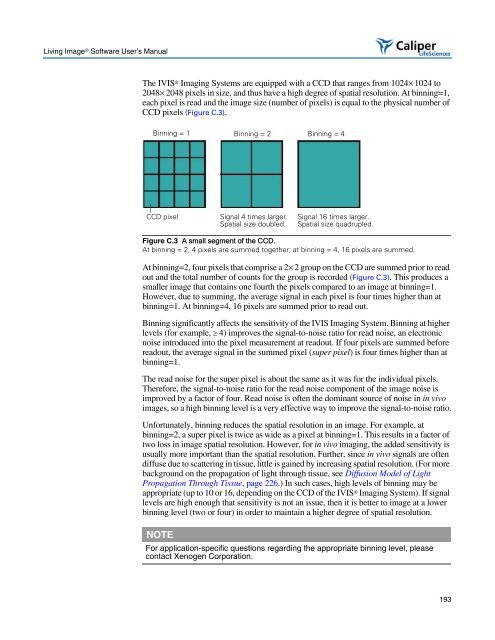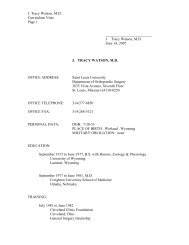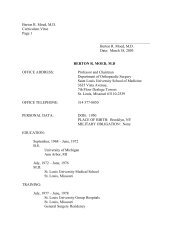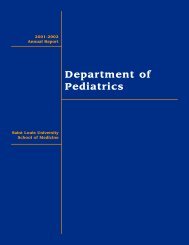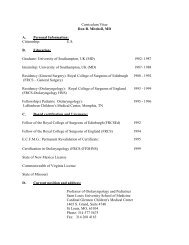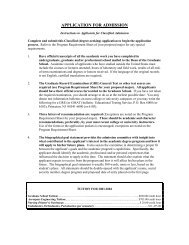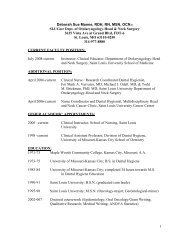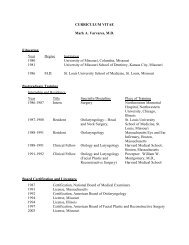Living Image 3.1
Living Image 3.1
Living Image 3.1
You also want an ePaper? Increase the reach of your titles
YUMPU automatically turns print PDFs into web optimized ePapers that Google loves.
<strong>Living</strong> <strong>Image</strong> ® Software User’s Manual<br />
The IVIS ® Imaging Systems are equipped with a CCD that ranges from 1024× 1024 to<br />
2048× 2048 pixels in size, and thus have a high degree of spatial resolution. At binning=1,<br />
each pixel is read and the image size (number of pixels) is equal to the physical number of<br />
CCD pixels (Figure C.3).<br />
Binning = 1<br />
CCD pixel<br />
Figure C.3 A small segment of the CCD.<br />
At binning = 2, 4 pixels are summed together; at binning = 4, 16 pixels are summed.<br />
At binning=2, four pixels that comprise a 2× 2 group on the CCD are summed prior to read<br />
out and the total number of counts for the group is recorded (Figure C.3). This produces a<br />
smaller image that contains one fourth the pixels compared to an image at binning=1.<br />
However, due to summing, the average signal in each pixel is four times higher than at<br />
binning=1. At binning=4, 16 pixels are summed prior to read out.<br />
Binning significantly affects the sensitivity of the IVIS Imaging System. Binning at higher<br />
levels (for example, ≥ 4) improves the signal-to-noise ratio for read noise, an electronic<br />
noise introduced into the pixel measurement at readout. If four pixels are summed before<br />
readout, the average signal in the summed pixel (super pixel) is four times higher than at<br />
binning=1.<br />
The read noise for the super pixel is about the same as it was for the individual pixels.<br />
Therefore, the signal-to-noise ratio for the read noise component of the image noise is<br />
improved by a factor of four. Read noise is often the dominant source of noise in in vivo<br />
images, so a high binning level is a very effective way to improve the signal-to-noise ratio.<br />
Unfortunately, binning reduces the spatial resolution in an image. For example, at<br />
binning=2, a super pixel is twice as wide as a pixel at binning=1. This results in a factor of<br />
two loss in image spatial resolution. However, for in vivo imaging, the added sensitivity is<br />
usually more important than the spatial resolution. Further, since in vivo signals are often<br />
diffuse due to scattering in tissue, little is gained by increasing spatial resolution. (For more<br />
background on the propagation of light through tissue, see Diffusion Model of Light<br />
Propagation Through Tissue, page 226.) In such cases, high levels of binning may be<br />
appropriate (up to 10 or 16, depending on the CCD of the IVIS ® Imaging System). If signal<br />
levels are high enough that sensitivity is not an issue, then it is better to image at a lower<br />
binning level (two or four) in order to maintain a higher degree of spatial resolution.<br />
NOTE<br />
Binning = 2 Binning = 4<br />
Signal 4 times larger.<br />
Spatial size doubled.<br />
Signal 16 times larger.<br />
Spatial size quadrupled.<br />
For application-specific questions regarding the appropriate binning level, please<br />
contact Xenogen Corporation.<br />
193


